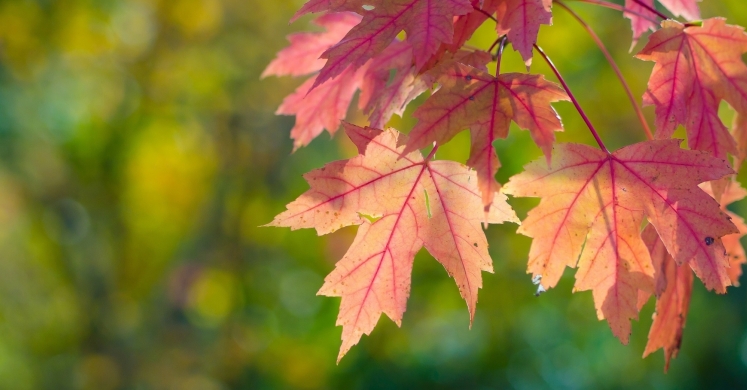Blog

#bioPGH blog: The Colors of October
 A resource of Biophilia: Pittsburgh, #bioPGH is a weekly blog and social media series that aims to encourage both children and adults to reconnect with nature and enjoy what each of our distinctive seasons has to offer. From the best times to plant seasonal flora and enjoy their peak blooms, to astronomical events and creatures to keep an eye and ear out for, Phipps will keep you in the know with what’s going on in our environment!
A resource of Biophilia: Pittsburgh, #bioPGH is a weekly blog and social media series that aims to encourage both children and adults to reconnect with nature and enjoy what each of our distinctive seasons has to offer. From the best times to plant seasonal flora and enjoy their peak blooms, to astronomical events and creatures to keep an eye and ear out for, Phipps will keep you in the know with what’s going on in our environment!
If you look outside the nearest window, fiery splashes of reds, yellows and oranges have replaced summer’s green. The outdoors beckon with the sound of dried leaves rustling in the wind, swirling up those reds and yellows across our paths and contrasting magnificently with the dimming green of the grass and the blue-gray of a cloudy October sky. What are all of these seasonal colors that we’re seeing and why does the fall bring them out in such brilliant beauty?
The first thing to keep in mind about color is that as long as we are in a lighted space, we are surrounded by every color of light. If you recall your ROY G BIV rainbow (red, orange, yellow, green, blue, indigo, and violet), you’ll remember that what we see as white light is really all of the colors of light in our visible spectrum combined. To test this, if we hold up a prism and see a rainbow on the wall, we are seeing all of those colors in white light bending over the angles of the crystal (refraction) and separating into a rainbow. Those colors can even be “reassembled” back into white light if you hold up a second prism to the rainbow of the first!
Now let’s look at the pigments in plants that produce vivid bright colors. During the summer, when you see a tree boasting a thick mane of green leaves, the color you see is actually the reflection of green light from the pigments of those leaves—in particular, chlorophyll pigments. Within plant cells, chlorophylls are a part of a cluster of molecules called a photosystem that begins photosynthesis, the process by which most plants make food. During photosynthesis, chlorophyll absorbs mainly the reds and blues of the light spectrum to power the chemical process of food production. Chlorophyll doesn’t use green light, however, and just reflects it back out into the environment. That reflection is why leaves look green!
Why then do leaves appear as bright reds and yellows in the fall? Well, while chlorophyll may reflect green light, other pigments reflect other colors of light. Though summertime leaves have abundant chlorophyll, autumn’s shortening photoperiod (length of daylight) acts as a cue for leaves to stop photosynthesizing. As the existing supply of chlorophyll breaks down, the colors that emerge are other pigments such as carotenoids (yellows, reds and oranges) and anthocyanins (reds and purples). Those pigments were also there during summer, but were not as abundant chlorophyll.
Connecting to the Outdoors Tip: Are you ready to run outside and take in all of the seasonal splendor? Right now, our state and local parks are the perfect places to go see spectacular fall foliage. If you’d like to save some leaves to add a little color to winter, you can press leaves or fall flowers by placing them between two pieces of plain paper, laying them carefully inside the pages of a large heavy book (such as a phone book), and placing a few heavy books on top of that one. Leave the stack as-is for 10-14 days, then preserve your pressed leaf or flowers with clear contact adhesive sheets. Simple plant presses can also be easily and inexpensively found online.
Continue the Conversation: Share your nature discoveries with our community by posting to Twitter and Instagram with hashtag #bioPGH, and R.S.V.P. to attend our next Biophilia: Pittsburgh meeting.
Resources
Florida State University—Optics of Light and Color
Florida State University—The Physics of Light and Color
SUNY College of Environmental Science and Forestry—Why Leaves Change Color
Journal of Biomedicine and Biotechnology—Anthocyanins - More than Nature’s Colours
Oregon State University—Carotenoids
Select photos © Wikimedia Users: Kenny Louie CC-BY-SA-2.0 and dcrjsr CC-BY-3.0

